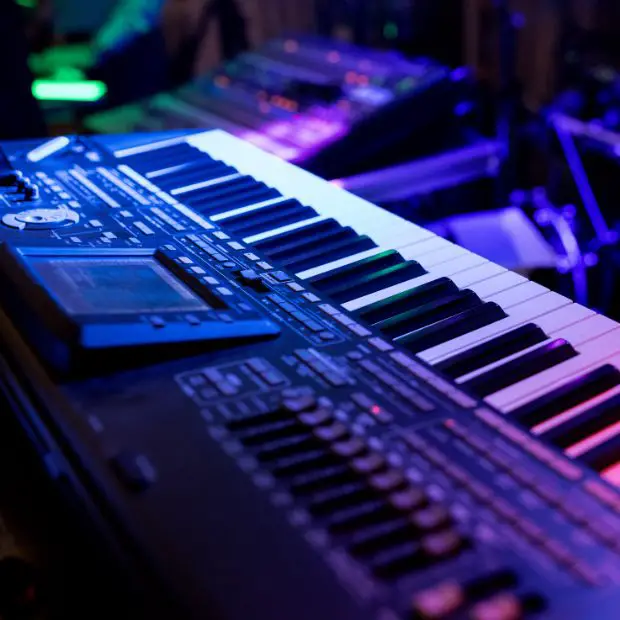
Music has always held a powerful role in storytelling, evoking emotions and enhancing narratives across various mediums. In the realm of gaming and digital media, this role takes on a unique significance.
As technology evolves, so does the immersive experience of video games and interactive platforms. Here, music serves not just as a backdrop, but as a dynamic force that shapes the user’s journey, reactions, and engagement. From intensifying action sequences to creating atmospheric landscapes, the influence of music in these domains transcends traditional boundaries, offering audiences a multi-sensory experience that is both captivating and transformative. This interplay between sound and interactivity crafts a distinctive narrative tapestry, underscoring the profound impact of music in the digital age.
The Evolution of Video Game Music
Video game music has journeyed from simple beeps to full orchestral masterpieces, mirroring the technological and artistic evolution of the games themselves. But how did it all begin? The origins of video game music can be traced back to the early days of arcade games. The earliest video games, due to hardware limitations, didn’t have what we’d consider “music” today, but rather simple tones or beeps. The aim was functional: to provide auditory feedback to the player, such as signaling a game start or a player’s mistake.

The first game to feature continuous background music was Taito’s “Space Invaders” in 1978. Its ominous four-note loop, increasing in speed as the aliens descended, wasn’t just background noise; it added tension and urgency to the gameplay. This was a revelation. Game designers realized that music could deeply influence the gaming experience. From there, as technology advanced, so did the complexity of video game music. The 1980s, marked by the era of home consoles like the Nintendo Entertainment System (NES), witnessed a boom in memorable 8-bit tunes. Koji Kondo’s work on “Super Mario Bros.” is a prime example, with melodies that remain iconic to this day. As gaming platforms progressed, so did the audio capabilities. The 16-bit era brought richer sounds and more intricate compositions. By the time CDs became the medium for games in systems like the PlayStation, composers had almost the same freedom as film composers, leading to scores that could stand alongside Hollywood productions.
Music’s Impact on Player Engagement
In the world of video games, music serves as more than just an auditory backdrop—it’s a tool that developers use to create mood, set pace, and deeply engage players in the virtual environment. The strategic use of music can heighten the emotional impact of a scene, guide player behavior, or even provide subtle gameplay hints.
Different types of music serve different purposes in games:
- Ambient Music: This type of music sets the overall mood of a game. In a mystery game, eerie, suspenseful tracks might play in the background, keeping players on edge. In contrast, a serene exploration game might feature gentle, melodic tunes that allow players to immerse themselves in the environment.
- Dynamic Music: Some games adapt their musical scores in real time based on what’s happening in the game. For example, as a player’s character gets closer to danger, the music might become more intense and urgent, subtly cueing the player to be cautious.
- Thematic Music: Many games have recurring themes or motifs that correspond to specific characters or events. These melodies can evoke specific emotions or memories, further deepening the connection between the player and the game’s story.
- Interactive Music: In rhythm games, the music itself becomes a central gameplay element. Players might need to hit notes in time with the beat or perform actions synchronized with the rhythm.
The type of music chosen and its implementation directly impact player engagement. For instance, the use of a calming, repetitive melody in a puzzle game might help players concentrate, while high-tempo tracks in racing games can increase the sensation of speed and urgency. Interestingly, with the rise of educational games and apps, music is also playing a role in skill acquisition. For example, a piano learning app might incorporate game-like elements where users have to play along with a track, turning practice into an engaging challenge. In such cases, music not only enhances engagement but also facilitates learning by making the process interactive and fun.

Music Genres in Video Games
Video games have always utilized a diverse range of music genres to accentuate their narratives, characters, and worlds. The choice of music genre can deeply influence a player’s emotions, the game’s atmosphere, and the overall experience.
Here’s an exploration of some common music genres found in video games and how they’re typically used:
- Orchestral and Symphonic: Commonly found in epic role-playing games (RPGs) and adventure titles, this genre lends a cinematic quality to games. Games like “The Elder Scrolls” series or “The Legend of Zelda” franchise use sweeping orchestral scores to evoke grandeur, adventure, and emotion.
- Electronic and Synth: A staple in futuristic, sci-fi, and cyberpunk games, electronic and synth music can create an atmosphere of technological advancement or alienation. Games like “Deus Ex” or “Hotline Miami” use electronic beats to set their tone.
- Rock and Metal: Often used in action games, racing titles, or games with a rebellious attitude. Titles like “Doom” or certain segments of “Final Fantasy” have used rock and metal tracks to energize players and elevate adrenaline-pumping moments.
- Jazz and Blues: These genres can be found in noir-inspired detective games or urban settings, providing a mood of mystery, elegance, or melancholy. “L.A. Noire” and parts of “Persona 5” offer jazz-infused scores that set a distinctive mood.

Audio engineering plays a huge role in film production.
Iconic Video Game Soundtracks
These soundtracks, among others, have shaped players’ experiences, creating unforgettable moments and elevating video games from mere entertainment to art. Many of these compositions have seen adaptations in concert performances, covers, and remixes, further testament to their enduring appeal and impact.
Let’s have a closer look at some soundtracks that have left an indelible mark on the industry:
- “Super Mario Bros.” (Koji Kondo): Few tunes are as instantly recognizable as the upbeat, adventurous theme from Mario’s escapades. Kondo’s compositions for the Mario series have become synonymous with video gaming itself.
- “The Legend of Zelda” series (Koji Kondo): From the epic overworld theme to the haunting melodies of “Ocarina of Time,” Zelda’s music captures the spirit of adventure and the essence of its rich lore.
- “Final Fantasy” series (Nobuo Uematsu): Uematsu’s sweeping compositions, like “Aerith’s Theme” and “To Zanarkand,” are filled with emotion, making them favorites at video game music concerts worldwide.
- Minecraft (Daniel “C418” Rosenfeld): The music of “Minecraft” has become as iconic as the game itself. Composed by Daniel “C418” Rosenfeld, the game’s ambient tracks lend a unique atmosphere to the blocky, sandbox world. Songs like “Sweden,” “Mice on Venus,” and “Subwoofer Lullaby” are calming, almost meditative, allowing players to lose themselves in their creations. “Haggstrom” and “Minecraft” are other standout pieces that capture the game’s serene and creative spirit.
Final thoughts
In the vast landscape of video gaming, the auditory experience, shaped by soundtracks and sound design, stands as a testament to the medium’s depth and artistry. From the serene melodies of “Minecraft” that echo the tranquility of creation to the suspenseful cues of “Among Us” that accentuate the game’s core mechanics of trust and deception, music and sound serve as more than just a backdrop; they’re integral to the fabric of the gameplay experience. These games, and countless others, showcase how intricately designed soundtracks can evoke emotions, tell stories, and enhance immersion. As the gaming industry continues to evolve, the role of music remains paramount, reminding us that in the interplay of visuals, gameplay, and sound, it’s often the latter that resonates long after the screen goes dark. Whether you’re a casual player or a dedicated gamer, the melodies, beats, and ambient sounds of our favorite games stay with us, echoing memories of adventures had, challenges overcome, and stories told. Next up, you may want to explore a guide on the top comic book publishers.
Hey there, welcome to my blog! I'm a full-time entrepreneur building two companies, a digital marketer, and a content creator with 10+ years of experience. I started RafalReyzer.com to provide you with great tools and strategies you can use to become a proficient digital marketer and achieve freedom through online creativity. My site is a one-stop shop for digital marketers, and content enthusiasts who want to be independent, earn more money, and create beautiful things. Explore my journey here, and don't forget to get in touch if you need help with digital marketing.

